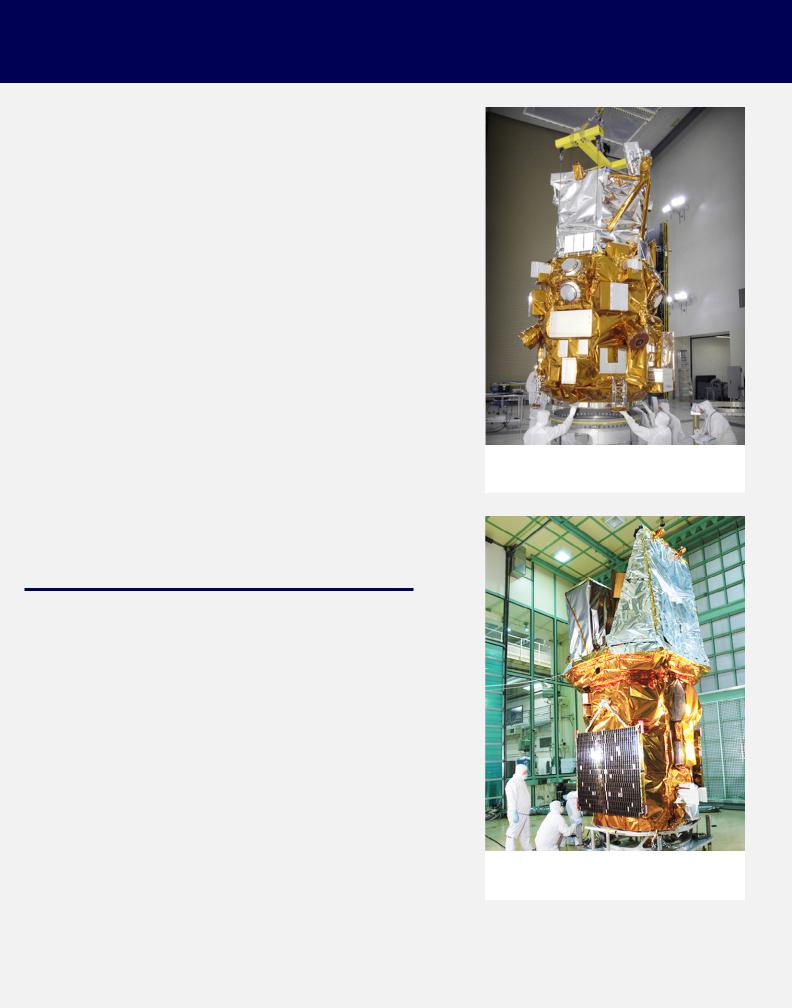Orbital LEOStar-3 User Manual

LEOStar™-3 Bus
Flight-Proven, Standard Modular Spacecraft Bus
LEO
Satellite Bus
Design
The LEOStar-3 spacecraft is the most capable of Orbital’s buses. Originated to support long-life missions, the standard, modular bus design incorporates improvements and upgrades from Orbital's subsequent bus developments and their highly successful missions. For each new contract, Orbital selects the flight-proven core-design best matched for the specific mission, then scales, adapts, and optimizes the design for the mission’s needs. This modularization and design re-use concept has resulted in shorter schedule times and reduced risk.
The LEOStar-3 is featured in NASA Goddard’s Rapid Spacecraft Development Office (RSDO) catalog. It is optimized for LEO missions, but can be configured to support deep-space/interplanetary, MEO, HEO, or GEO applications.
The LEOStar-3 architecture utilizes open frame avionics with standard backplane configurations (e.g., cPCI), and externally accessible open payload areas with simple bolt-on structural and open architecture electrical interfaces. Field Programmable Gate Arrays are used extensively to provide re-programmability and to reduce parts count. Six and eight sided structure designs with honeycomb
panels and aluminum frames are used that can easily be re-sized in height and diameter as needed to accommodate customer mission requirements.
Payload Accomodations
Single or multiple payloads are easily accommodated by the externally accessible modular payload deck. This enables parallel integration and testing, reducing the overall delivery schedule, as well as reducing the potential impact of unforeseen problems, incorporation of technology upgrades, and requirements changes.
Dulles, Virginia SMF |
|
Gilbert, Arizona SMF |
|
|
|
FACTS AT A GLANCE
•Compatible with mid-sized launch vehicles
•Missions flown with launch masses from 817 to 4,288 kg
•Onboard propulsion standard
•Available in NASA's RSDO catalog
•Extensive flight heritage: 12 launched to date, 1 in production
•Supports multiple, complex payload instruments
-Externally accessible decks with simple bolt-on mounting
-Open architecture, standard electrical interfaces
•Demonstrated contamination control processes for sensitive instruments
•Single-string, selective, or full redundancy
•All assembly, payload integration, and system testing performed in one of Orbital's two 135,000 square foot satellite manufacturing facilities (Arizona and Virginia)
•21-36 months award-to-bus delivery
•36-48 months award-to-launch

LEOStar™-3 Bus
Mission Services
Customers can procure a LEOStar-3 spacecraft bus alone or as part of a “turn-key” service that includes mission design, payload/instrument integration, full satellite system environmental testing, launch site operations, early orbit checkout, and mission operations, including instrument data delivery to principal investigators. In addition, the LEOStar-3 bus is compatible with Orbital's Antares™ launch vehicle.
Heritage
Twelve LEOStar-3 spacecraft have been launched to date in support of missions for space and Earth science and Earth imaging. One of the missions is restricted.
The LEOStar-3 core design evolved over the years, continually upgrading performance and increasing reliability to provide value to our customers. The Swift mission for NASA GSFC provided never before seen insights into Gamma-ray bursts and the Coriolis mission for the Air Force and the Office of Naval Research demonstrated a new approach to measuring wind speed and direction over the oceans. More recent LEOStar-3 missions include GeoEye's GeoEye-1 Earth Imager, and NASA's Fermi Gamma-Ray Observatory and Landsat 8.
One LEOStar-3 spacecraft is in production. ICESat-2 will continue the precision laser-ranging topography measurements initiated by the first ICESat mission and provide invaluable data needed to assess ice sheet mass balance and sea ice thickness and to estimate biomass, helping scientists develop a better scientific understanding of the Earth system and its response to natural or human-induced changes.
Options
•Structure can be tailored to suit the mission, instruments, and LV
•Redundancy can be tailored to meet required design life
For more information, please contact: science@orbital.com
(703) 406-5000
The GeoEye-1 satellite is a precision printing platform for high resolution Earth imaging
The Swift gamma ray observatory is a NASA MIDEX program to detect gamma ray bursts (GRBs)
